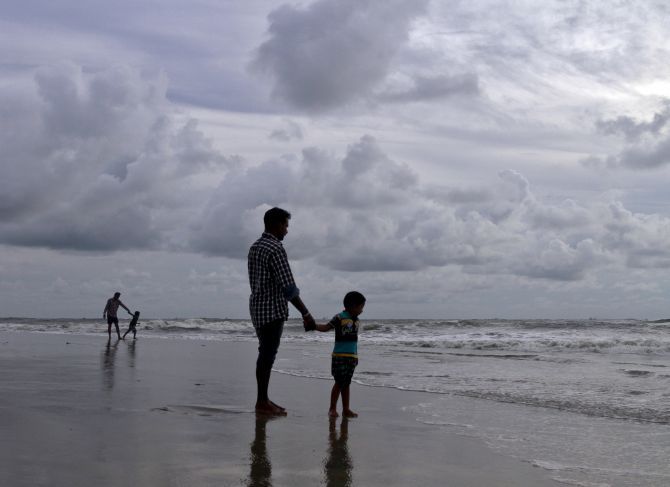 | « Back to article | Print this article |
 Reasons for recurring rain-related problems are many apart from the apathy and inefficiency of the civic bodies
Reasons for recurring rain-related problems are many apart from the apathy and inefficiency of the civic bodies
Come rain and normal life in most cities, including Delhi and Mumbai, is thrown out of gear due to waterlogging of roads and railway tracks.
This has got worse over time -- though the civic authorities ritually claim full preparedness to face the rains prior to the onset of the monsoon.
This season’s first heavy downpour in Mumbai on June 19 brought life to a standstill; pre-monsoon showers in Delhi in recent days disrupted traffic.
Thus, these claims have been shown up. The situation in other metros, including Chennai and Kolkata -- as also in many other smaller but densely populated towns -- is no different.
The reasons for this recurring nuisance are many apart from the apathy and inefficiency of the civic bodies.
A major factor, often overlooked, is the altered pattern of rainfall due to climate change.
The frequency of very heavy downpours in short periods seems to have increased even though the overall annual average rainfall may not have undergone much change as yet.
The growing incidents of cloud bursts, such as the one in Uttarakhand in 2013 and the Kashmir valley last year, besides the 2005 deluge of Mumbai, are the striking cases in point.
Old, ill-planned and poorly maintained drainage systems in most cities are unable to cope with such events.
A report, entitled 'Mumbai Marooned', compiled after the 2005 flooding, highlighted the fact that the city’s drainage system was designed in the early 20th century for a maximum rainfall of 25 millimetres an hour, assuming that half of it would be absorbed into the open stretches of land.
But now, not only does intensity often exceeds the assumed level but, also, open lands have been paved, concretised or built on -- leaving hardly any space for seepage of rainwater into underground aquifers.
Besides, the multiplicity of agencies and their lack of expertise on planning and maintaining drainage systems is further confounding this problem. Delhi, for instance, has four different agencies to deal with this task.
As a result, the silt removed from the storm water drains often continues to lie on their banks to ultimately find its way back into the drains.
Building permissions with regard for drainage needs often blocks natural drainage courses, adding to the menace of waterlogging.
It is worth recalling how a little extra rain and release of water from an upstream barrage on river Yamuna had played havoc in Delhi around the time of the Commonwealth Games in 2010.
It resulted in flooding of many parts of the capital -- from the Tibetan market near the interstate bus terminal to the Commonwealth Games Village that, in any case, was constructed, despite warnings, in the Yamuna floodplain.
What is needed is a proper plan to augment the capacity of the drainage system, to remove encroachments on the natural drainage routes and to ensure regular maintenance of the drainage infrastructure.
Any laxity on this count will only worsen the menace of waterlogging in major cities during the rainy season.
Image: A boy holds his father's hand as they walk on a beach in Kochi. Photograph: Sivaram V/Reuters